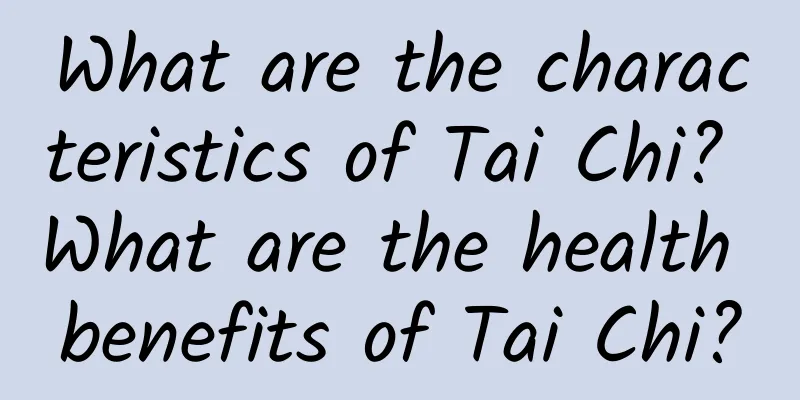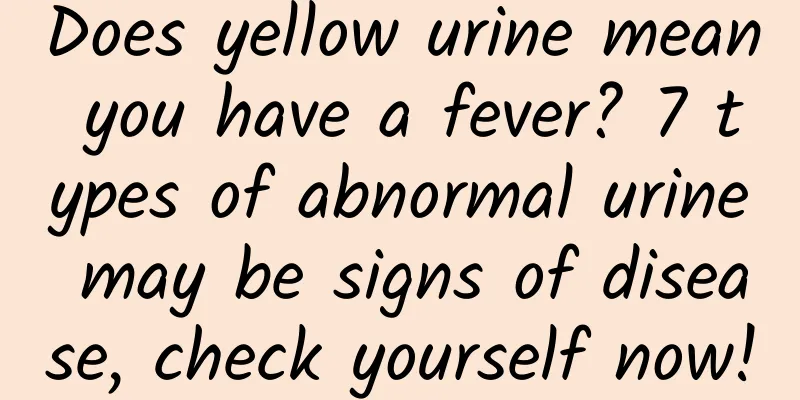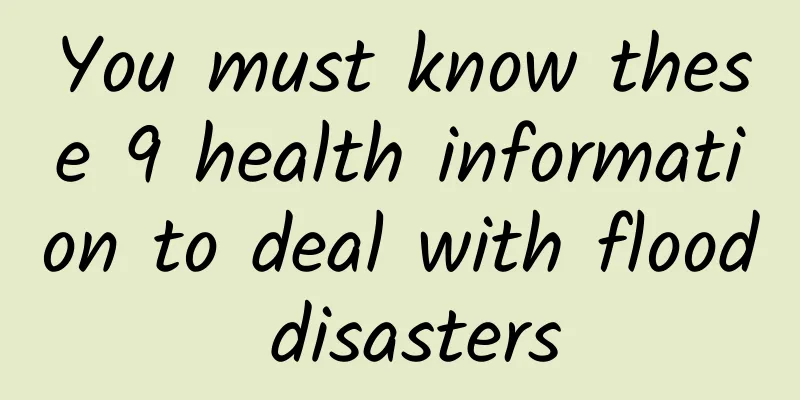What are the characteristics of Tai Chi? What are the health benefits of Tai Chi?

|
Tai Chi is influenced by traditional philosophy, and is philosophical and full of dialectical thinking. From a philosophical perspective, Tai Chi is known as "philosophical boxing", not only because the name of Tai Chi carries a strong philosophical meaning, not only because the essentials of Tai Chi movements contain profound philosophical meanings, but also because traditional philosophical thinking has fully penetrated Tai Chi, forming a unique movement idea, special technical requirements, and outstanding value functions. So, what are the characteristics of Tai Chi's exercises? What are the health-preserving effects of Tai Chi? Let's take a look at the introduction of Encyclopedia Knowledge Network to answer these questions! Contents of this article 1. What are the characteristics of Tai Chi? 2. What are the health benefits of Tai Chi? 3. Precautions for practicing Tai Chi 1What are the characteristics of Tai Chi?Tai Chi is unique in combat and has distinct characteristics. It requires using stillness to overcome motion, using softness to overcome rigidity, avoiding the real and attacking the empty, using force to generate force, and advocating that everything should be based on objectivity, and that it will be active if you follow others, but will be stagnant if you follow yourself. "Before the opponent moves, you should move first", "The last one to move should arrive first", and you should lead the opponent in, causing him to lose weight and fall into the air, or disperse and transfer the opponent's force, take advantage of the opportunity to enter, and fight back with all your strength. This combat principle of Tai Chi is reflected in the push-hands training and routine movement essentials, which can not only train people's physical qualities such as reaction ability, strength and speed, but also has very important significance in offensive and defensive combat training. 2What are the health benefits of Tai Chi?Skeletal muscles - Correction of the spine Practicing Tai Chi has a significant effect on the spine of our body. Almost every move in Tai Chi involves using the waist, and long-term accumulation has a good effect on the shape and structure of the spine. "It is rare to see elderly people who practice Tai Chi develop spinal deformities, and hunchbacks are also rare." Hunchback is a typical deformity of the elderly and a result of aging. However, the incidence of hunchback is much lower among people who practice Tai Chi regularly than among the general population. Regular Tai Chi practice can improve the range of motion of the spine and reduce the incidence of osteoporosis. "There are two main reasons for osteoporosis in the elderly: lack of exercise and calcium deficiency. Therefore, we cannot blindly supplement calcium without exercise. Tai Chi requires continuous movements and also has a certain anti-aging effect." About breathing - have an open mind Tai Chi enthusiasts often have an "open" mind, which is due to long-term persistence. People who practice Tai Chi regularly have good elasticity of lung tissue, greater mobility of the chest, and enhanced lung ventilation function. Tai Chi is mostly based on abdominal breathing, which is deep, long and even. In the repeated movements, the abdominal muscles and diaphragm are often exercised, which can increase the ventilation function. It can also accelerate the blood flow in the body and enhance the alveolar ventilation function through regular changes in abdominal pressure, which helps to maintain the mobility of the elderly. Therefore, we often see elderly people who practice Tai Chi without shortness of breath and recover quickly. The secret is here. Metabolism - attacking cholesterol Tai Chi often has a subtle effect on the body, and this is also true for cholesterol. Zhuge Chunying said that practicing Tai Chi has a good effect on the metabolism of lipids, proteins, and calcium and phosphorus in inorganic salts. She emphasized that practicing Tai Chi also affects material metabolism, which can be said to be a form of exercise to prevent aging. Previous experiments have proven that after 5 to 30 minutes of Tai Chi exercise, the cholesterol level in the blood of the elderly will decrease, especially in those with elevated cholesterol. A metabolic study of elderly people with arteriosclerosis before and after exercise found that after 5 to 6 months of exercise, the albumin level in the blood of the elderly increased, while the globulin and cholesterol levels decreased significantly, and the symptoms of arteriosclerosis were greatly alleviated. Cardiovascular disease - a good way to eliminate blood stasis Tai Chi has many movements, including the activities of various muscle groups and joints, as well as rhythmic breathing movements, especially diaphragm movements. Zhuge Chunying said that these movements combined together can strengthen blood and lymph circulation and reduce blood stasis in the body, which is a good way to eliminate blood stasis in the body. When practicing Tai Chi, one is often asked to "sink the Qi into Dantian", that is, to ask the Qi to sink downward. In fact, this is a kind of diaphragmatic breathing. Through the contraction and relaxation of the diaphragm and abdominal muscles, the abdominal pressure is constantly changed, which speeds up the blood flow and improves the blood circulation. Therefore, the essentials of Tai Chi movements can not only massage the liver regularly, but also eliminate liver congestion and improve liver function. "Economic method". The central nervous system - the "software system" of the brain As we all know, the nervous system is the "backbone" of the human body, the most important part of all regulatory systems, and the hub for regulating and controlling the activities of all systems and organs. Zhuge Chunying pointed out that today's society is fast-paced and stressful, and the central nervous system is often "unable to bear the load", leading to the occurrence of diseases. Therefore, any kind of exercise that can enhance the function of the "backbone" has a good health care significance for the whole body. Practicing Tai Chi requires a calm mind and a focused attention, which is good for brain activity. In terms of movements, Tai Chi movements should be "complete and coherent", from the eyes to the upper limbs, torso, and lower limbs, and should be consistent from top to bottom and from front to back. Because the movements are sometimes complex, they require good control and balance skills, which invisibly optimizes the "software system" of our brains time and time again and strengthens the system's working ability. For digestion - mechanical stimulation, prevent constipation As the saying goes, "one thing conquers another", because the central nervous system is in charge of all systems in the body, practicing Tai Chi regularly can achieve the effect of "hitting a cow from across the mountain". By improving the activity of the central nervous system, it can improve the function of the digestive system and avoid digestive system diseases caused by nervous system disorders, such as disorders of motor secretion and absorption. 3Things to note when practicing Tai Chi1. Tai Chi training method 1) Calm your mind and breathe naturally. That is, practicing boxing requires you to keep your mind quiet and focused, concentrate on guiding your movements, and breathe steadily, deeply, evenly and naturally. Do not force yourself to hold your breath. 2) Be centered, comfortable, gentle and slow. That means the body should remain relaxed and natural, neither biased nor unbiased, and the movements should be as smooth as flowing water, gentle and slow. 3) The movements are in an arc shape, smooth and complete, that is, the movements should be in an arc shape and spiral shape, with smooth transitions. At the same time, the waist is used as the axis, and the upper and lower parts move together, with the whole body forming a whole. 4) Continuity and coordination, with clear distinction between the real and the fake, that is, the movements should be continuous, the transitions should be smooth, the fake and the real should be clearly distinguished at all times, and the center of gravity should remain stable. 5) Be light, agile and calm, combining hardness and flexibility, that is, every movement should be light, agile and calm, neither floating nor stiff, soft on the outside and strong on the inside, the power should be complete and flexible, and no brute force should be used. 2. The essentials of practicing Tai Chi 1) Empty neck and top strength: the head and neck seem to be lifted upwards and kept straight, loose but not stiff and can be turned; 2) Hold the chest in and stretch the back, sink the shoulders and drop the elbows: the chest should be held in and not straightened, the shoulders should not be raised but should be sunken, the elbows should not be raised but should be dropped, and the whole body should be naturally relaxed; 3) Hand-eye coordination, with the waist as the axis, moving like a cat, distinguishing between the real and the fake: It means that when boxing, the upper and lower parts must respond to each other and be integrated. The movements must come from the mind, originate from the waist, move in the hands, and the eyes follow the hands. The bow steps and fake steps of the two lower limbs should be distinguished and alternated. Practice until the legs are strong, and move slowly without making any sound. 4) Seek stillness in movement, combine movement and stillness: that is, the body moves while the mind is still, and the mind should be focused on boxing; 5) All postures are even and continuous: the speed of each posture is even, and the movements are continuous, with muscles in all parts of the body relaxed, coordinated and closely connected; 6) Practicing Tai Chi requires intentional use of abdominal breathing to increase breathing depth, thereby improving respiratory function and blood circulation; 7) Practicing Tai Chi is a gradual process that requires perseverance. At the same time, you should observe and learn from each other during practice. I believe that through serious practice and continuous efforts, you can achieve the effect of strengthening your body. |
<<: Can Tai Chi help people fight? Why can Tai Chi cure diseases?
>>: What are the benefits of practicing Tai Chi? Why is it called Tai Chi?
Recommend
What are the dangers of drinking during menstruation? Be alert after reading
Women's bodies are more fragile during menstr...
What should we pay attention to in order to prevent lumbar disc herniation?
What should we pay attention to in order to preve...
How to regulate breast hyperplasia?
For women, the breast is a particularly important...
Wipe from back to front
Many female friends are faced with such a problem...
Is salpingography painful? What are the factors that cause pain?
Hysterosalpingography is a common minimally invas...
How long after induced abortion can I go out?
Generally, after ninety days of pregnancy, if the...
Why does a woman's vagina have an odor?
The odor of the lower body is quite common among ...
Why does false pregnancy occur?
Women have been responsible for reproducing offsp...
Even if you don't eat meat in spring, you should eat this. It is rich in iron and zinc and does not contain oxalic acid. If you miss it, wait until next year.
In spring, even if you don't eat meat, you ca...
Social Media Usage Behavior Survey Report in the Third Week of Ramadan in Indonesia in 2019
The change in traffic volume of social media usag...
What medicine can cure leucorrhea
Leucorrhea is a relatively normal physiological p...
Precautions after uterine fibroid surgery
Uterine fibroids are a very familiar thing for mi...
What foods are best for women to eat to replenish qi and blood
Women's physiological structure is different ...
How to treat dry and itchy female private parts?
Caring about women's health is one of the iss...
Can't you supplement calcium by sunbathing through glass?
Since childhood, we have often seen calcium suppl...









